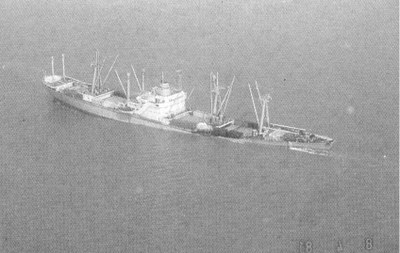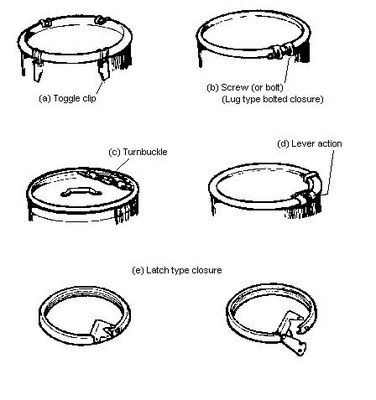19?? - Stanislaw Dubois
| Year | 19?? |
| Vessel | Stanislaw Dubois |
| Location | Off Island Texel, Netherlands |
| Cargo type | Package |
| Chemicals | CALCIUM CARBIDE , DI-tertiary-BUTYL PEROXIDE , SODIUM HYDROXIDE solid , SODIUM HYDROXIDE solutions (33%) |
Summary
The Polish registered general cargo ship Stanislaw Dubois loaded 857 tons of calcium carbide in drums and 955 tons of caustic soda in bags in the port of Gdynia/Gdansk, Poland. She then picked up a load of flammable organic peroxide (5.4 tons) and explosives (5.6 tons) in Hamburg. With these dangerous goods as well as other general cargo, she left for S.E. Asia via Antwerp, Belgium. On her way in the North Sea, she collided with the Sudanese ship Omdurman off the island of Texel, the Netherlands. Stanislaw Dubois was struck in her port side creating a hole of 7 by 7 metres, one metre above the bilge keel. Holds No. 2 and 3 became immediately flooded. The bulwark, hatch covers, main deck and mast house were also damaged. One of the flooded holds contained 500 tons of calcium carbide and 400 tons of cellulose. The cellulose imbibed water and swelled, pressing against the cargo of calcium carbide which was contained in drums with removal heads (Figure 1 for typical closures for metal drums with removal heads). This caused the drum heads to open and for calcium carbide to get in contact with the water.
Calcium carbide is water reactive solid emitting flammable, highly reactive acetylene when dissolved in water. Acetylene has a lower flammable limit of 2.5% and an upper flammable limit of 81 to 100% and may explode in the presence of an ignition source or when heated. Because of its triple bond, it reacts with a wide range of chemicals. It is a simple asphyxiant and anaesthetic. Inhalation of 100,000ppm (10%) the gas has a slight intoxicating effect in man. Marked intoxication occurs at 200,000ppm (20%), loss of co-ordination at 300,000ppm (30%) and unconsciousness, upon 5 minutes of exposure, at 350,000ppm (35%).
Narrative
The Polish registered general cargo ship Stanislaw Dubois loaded 857 tons of calcium carbide in drums and 955 tons of caustic soda in bags in the port of Gdynia/Gdansk, Poland. She then picked up a load of flammable organic peroxide (5.4 tons) and explosives (5.6 tons) in Hamburg. With these dangerous goods as well as other general cargo, she left for S.E. Asia via Antwerp, Belgium. On her way in the North Sea, she collided with the Sudanese ship Omdurman off the island of Texel, the Netherlands. Stanislaw Dubois was struck in her port side creating a hole of 7 by 7 metres, one metre above the bilge keel. Holds No. 2 and 3 became immediately flooded. The bulwark, hatch covers, main deck and mast house were also damaged. One of the flooded holds contained 500 tons of calcium carbide and 400 tons of cellulose. The cellulose imbibed water and swelled, pressing against the cargo of calcium carbide which was contained in drums with removal heads (Figure 1 for typical closures for metal drums with removal heads). This caused the drum heads to open and for calcium carbide to get in contact with the water.
Calcium carbide is water reactive solid emitting flammable, highly reactive acetylene when dissolved in water. Acetylene has a lower flammable limit of 2.5% and an upper flammable limit of 81 to 100% and may explode in the presence of an ignition source or when heated. Because of its triple bond, it reacts with a wide range of chemicals. It is a simple asphyxiant and anaesthetic. Inhalation of 100,000ppm (10%) the gas has a slight intoxicating effect in man. Marked intoxication occurs at 200,000ppm (20%), loss of co-ordination at 300,000ppm (30%) and unconsciousness, upon 5 minutes of exposure, at 350,000ppm (35%).
Resume
With the intention to have the vessel repaired, tugs arrived and towed the ship towards the port of Rotterdam. However, due to the risk of explosion, the ship was not allowed to enter neither a Dutch port nor any other E.U. port. Furthermore, due to flooding, the vessel's draught had increased to about 14 metres which also made it impossible to enter any other European port (see Figure 2). After 7 days of negotiations, the Dutch authorities ordered Stanislaw Dubois to be scuttled. Prior to scuttling the vessel, the fuel oil was lightered with salvage vessels keeping her afloat. The vessel was sunk at a depth of 72m, 90 nautical miles NW of the island of Texel.



